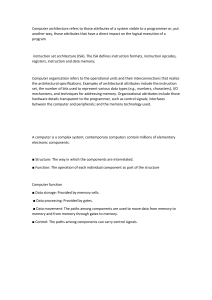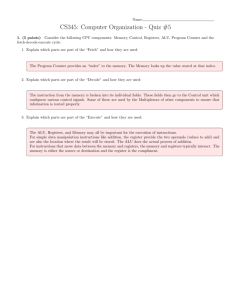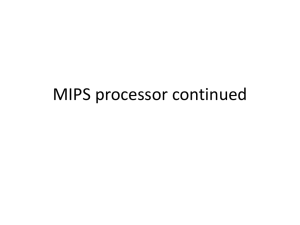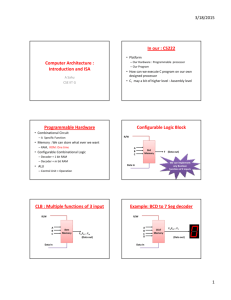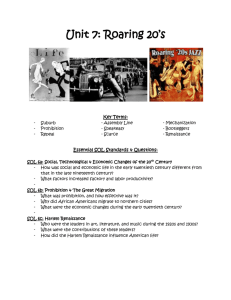Sol - Edge
advertisement
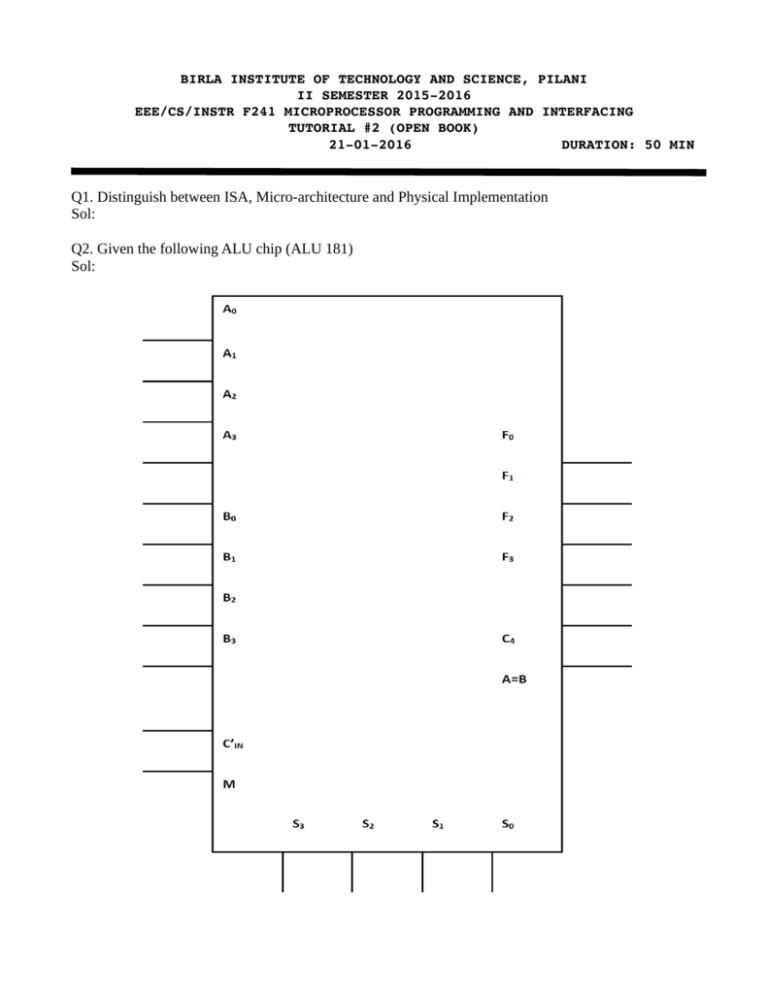
BIRLA INSTITUTE OF TECHNOLOGY AND SCIENCE, PILANI II SEMESTER 2015­2016 EEE/CS/INSTR F241 MICROPROCESSOR PROGRAMMING AND INTERFACING TUTORIAL #2 (OPEN BOOK) 21­01­2016 DURATION: 50 MIN Q1. Distinguish between ISA, Micro-architecture and Physical Implementation Sol: Q2. Given the following ALU chip (ALU 181) Sol: ➔ S3 – S0 1. Selects ALU operation to perform ➔ M 1. 1–Logical 2. 0-Arithmetic ➔ CIN ➔ C4 along with A= B can be used for unsigned comparison (a) What will be the size of CPU built around this ALU (b) If other than ALU operations- the processor performs ➢ Load data from mem to reg ➢ Store data from reg to mem ➢ Move data from reg to reg ➢ Unconditional Branch ➢ 4 Conditional branches ➢ 1 Call ➢ 1 Return And Instruction is of the format – Opcode dst,src , All ALU operations are performed on registers, There are totally 16 Registers R0- R15 . (c) What type of Architecture does the processor implement? (d) What will be the normal size of the instruction? (e) If the Processor can support 64KB of memory and Memory is byte organised- How many address are required? (f) What will the number by which the Program Counter be incremented to support the normal sized instruction? (g) Can you think of any other major digital modules that the processor may require? Q3. With reference to 8086, List the different types of registers and state their purpose. Sol: Q4. What physical address is represented by: (i) 4370 : 561E H (ii) 7A32 : 0028 H Sol: Q5. Using restoring division perform the following 35/5. Sol:




